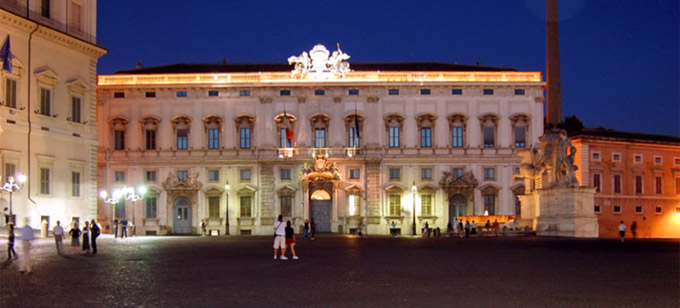 Quirinale
Official residence of the President of the Italian Republic, the Quirinal is one of the symbols of the Italian state. In addition to being important from the political point of view, the building is equally important also from the artistic point of view: for the construction of the Quirinal, which has 1200 rooms inside, helped teachers of Italian as Pietro da Cortona, Domenico Fontana, Ferdinando Fuga and others. Until the second half of the nineteenth century, it was the summer residence of the Roman Pontiff, and then became a royal residence of the Savoy, eventually becoming, following the referendum of 2 June 1946, the seat of the Republican head of state.
Palazzo Madama
Located not far from Piazza Navona, Palazzo Madama is now home to the Italian Senate. With a sprawling like a pentagon, but with different length sides, the building has a main entrance to the center of which is placed a bronze statue of Emilio Greek Nestled entitled Great Figure. The floor, now marble, travertine has replaced the former, while six columns that make up the porch back to the original structure of the days of Pope Leo X.
Montecitorio
Head of the Chamber of Deputies of the Italian Republic, Deputies has thousands of paintings and sculptures dating from the sixteenth to the twentieth century, various archaeological finds and a considerable number of works of art such as watches, antique furniture, tapestries and more. Rich in history, as well as the other palaces of Italian politics, Montecitorio deserves to be seen by those who went on a visit to one of the most beautiful cities in the world. |